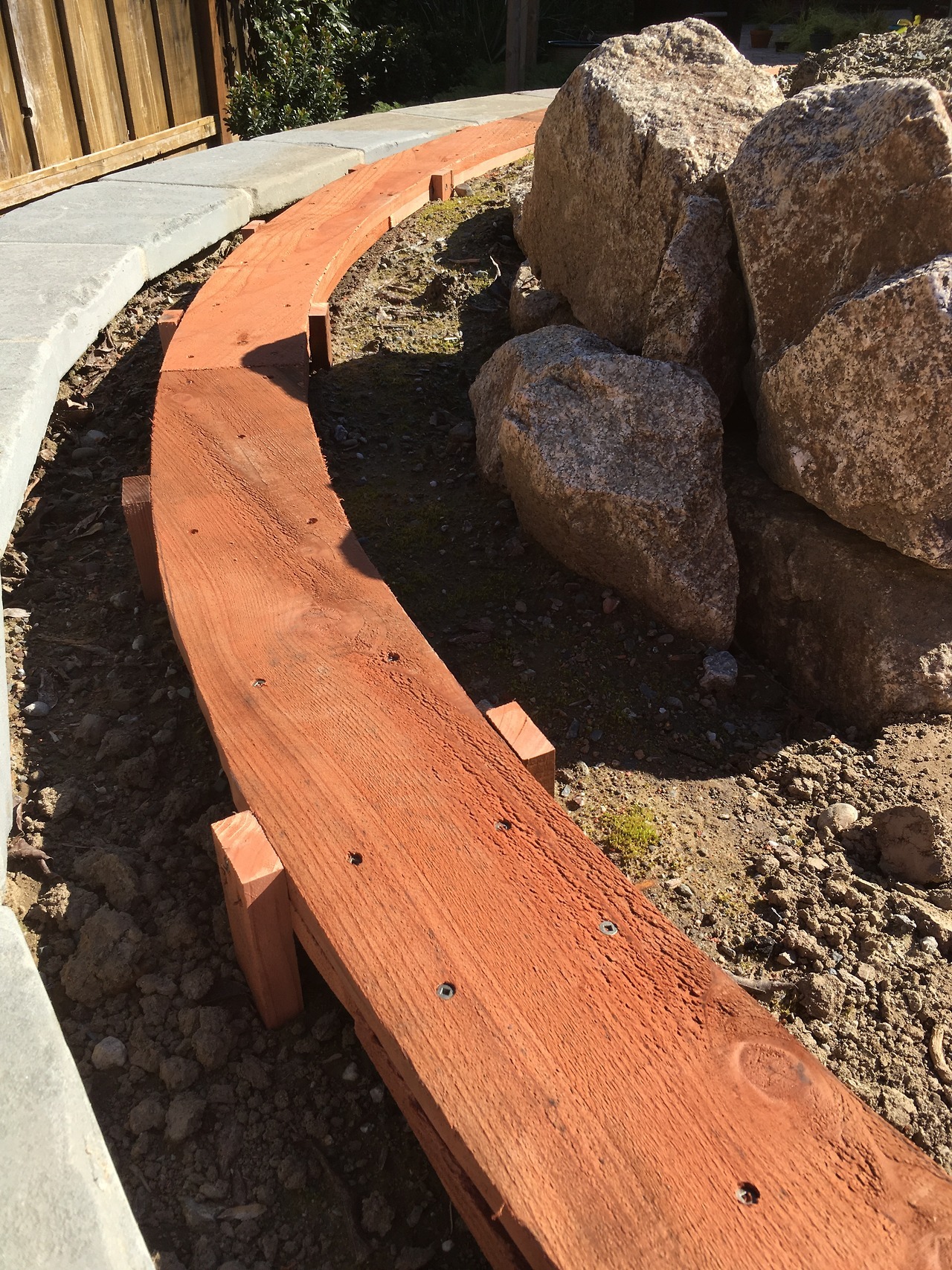OK, day 2 of track roadbed with Daniel Smith. The lower layer of roadbed is in place but not yet leveled and staked in place. Tomorrow we will stake/level as well as laying down some track and closing over the tunnel.
We ran out of wood for the upper level and need to do some work on the switches, so Daniel will be coming back next week to get the mainline complete and runnable. There will still be some things left to do (of course), including the mine.
One thing that we decided today was that the tunnel was a low point on the railroad and pretty likely to be a water trap. We spent some time carefully sculpting the dirt profile to peak in the middle, and then leveled it with pea gravel. We also dug small “french drains” filled with pea gravel off to the sides of each end to provide a place to drain. Fingers crossed that this is enough.
Here’s the pea gravel poured into the tunnel, on top of some landscaping cloth. A piece of redwood will go over this for roadbed. Sorry for the low picture quality, too much contrast between sun and shadow here 
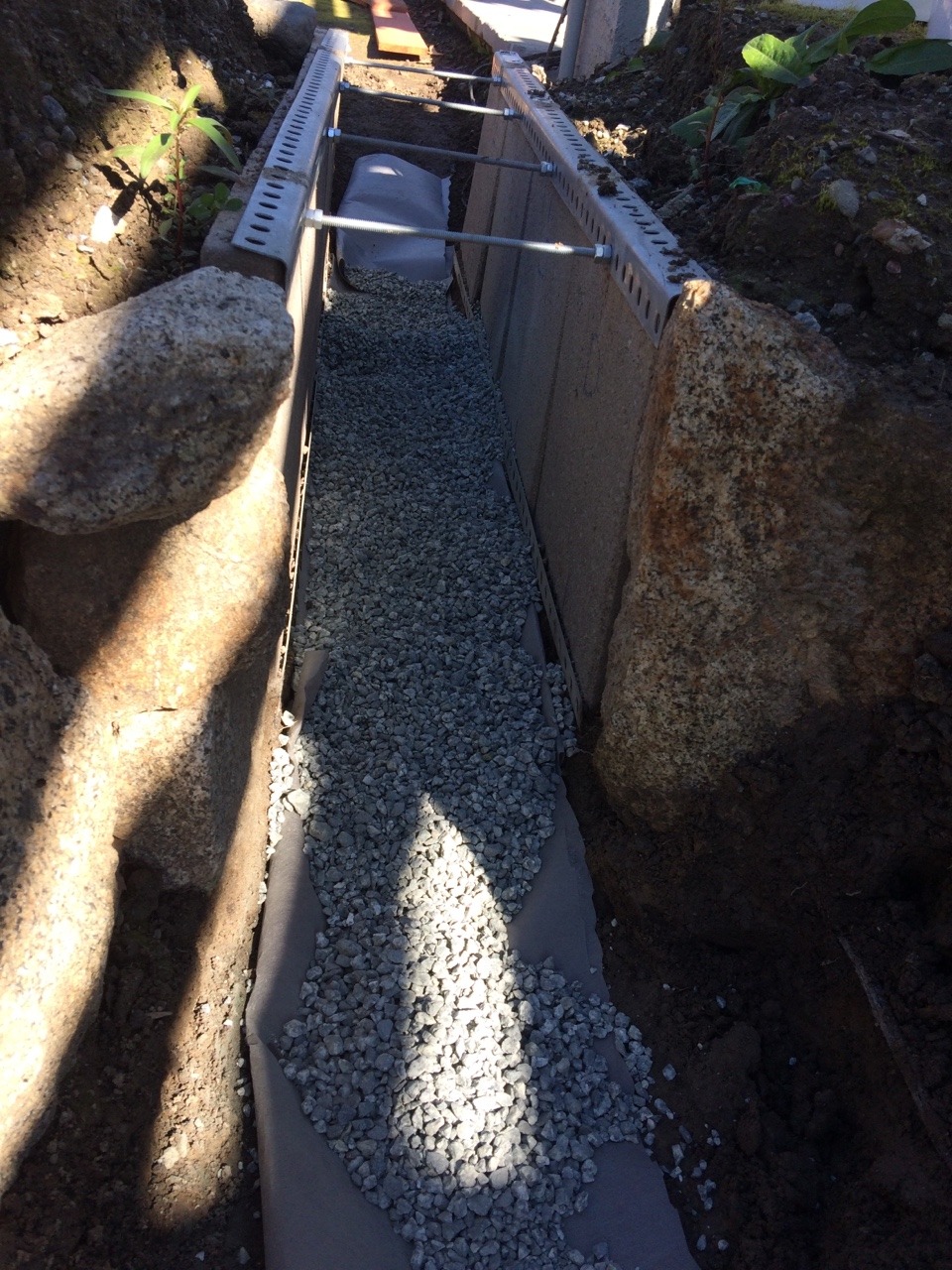
Here’s a view from the Jasper side, looking back toward the tunnel. The sawmill fits between those 2 sidings. That’s Daniel cutting some wood.
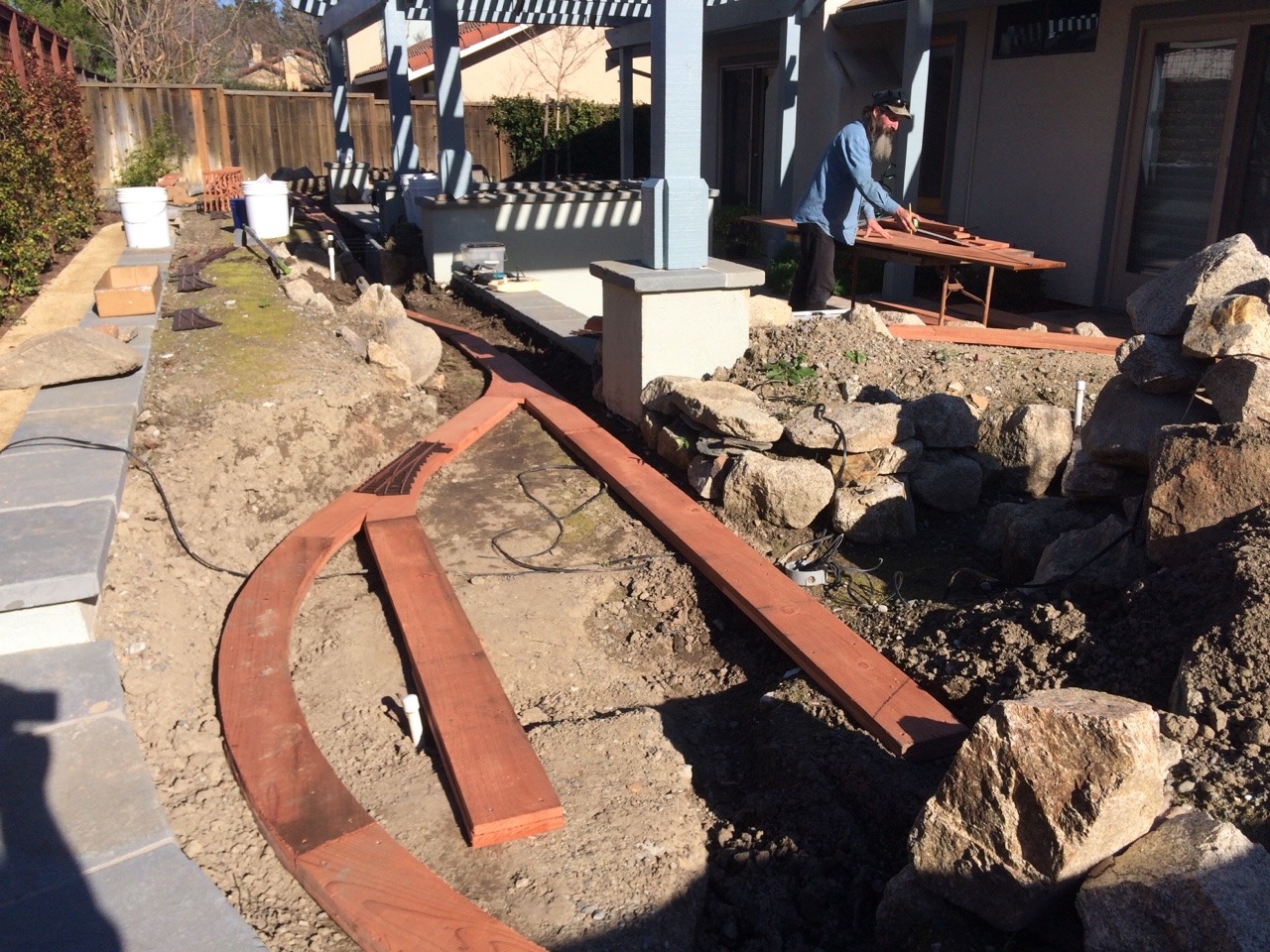
This is the gentle S curve that leads from the sawmill turnout into the tunnel:
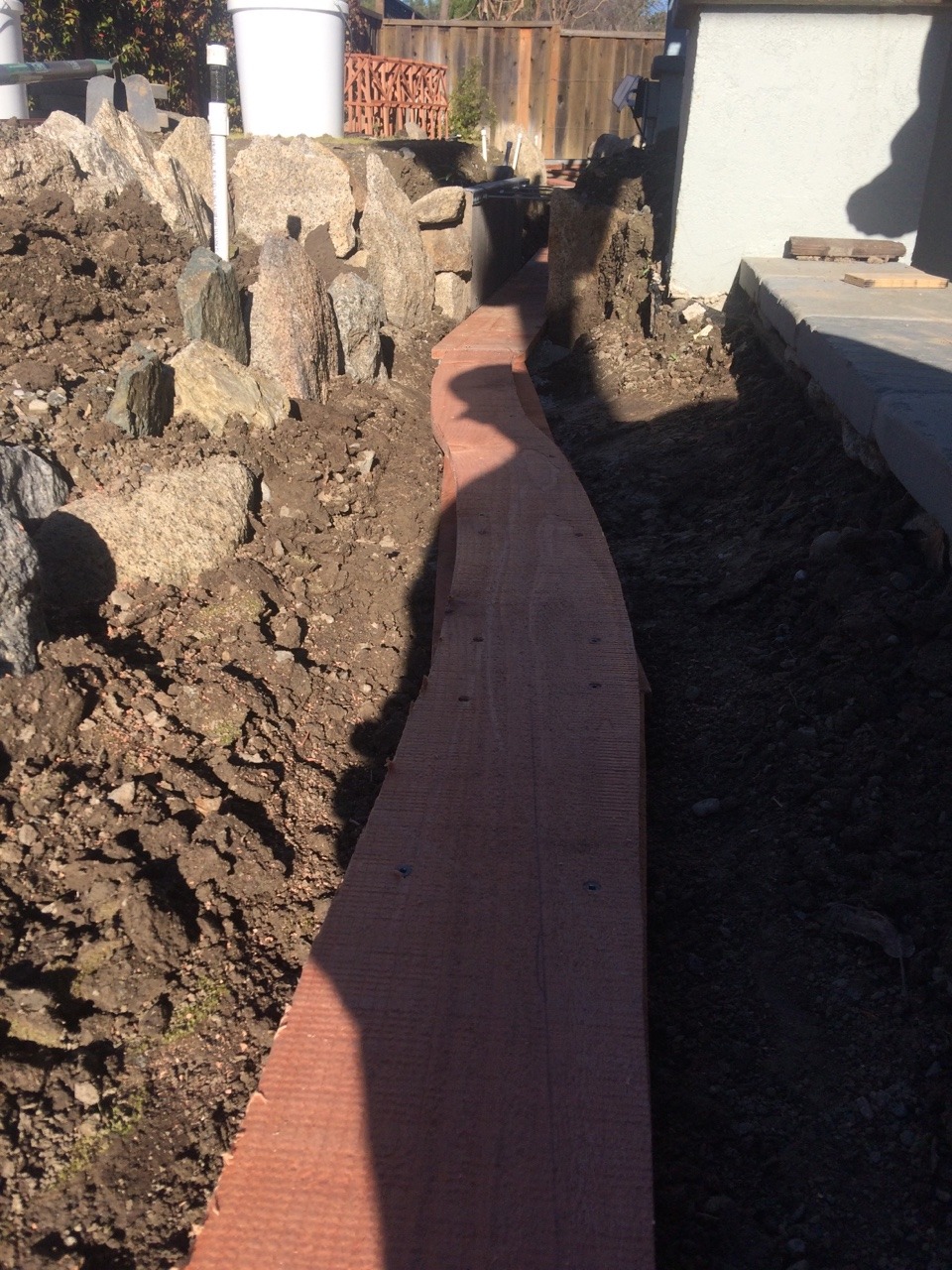
Here’s the Durango side of the tunnel:
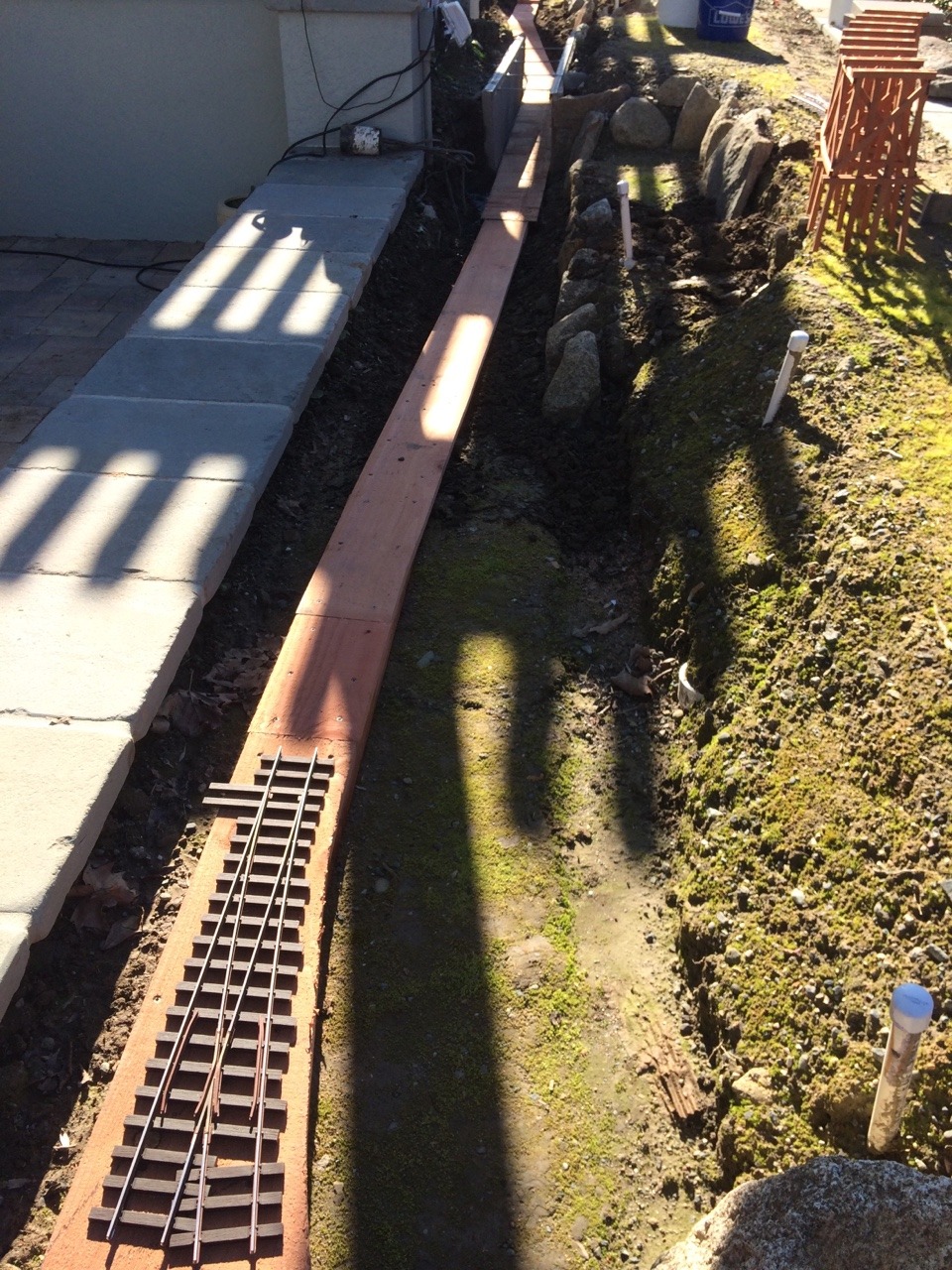
And here’s the yard in Durango (it got finished… I took the picture too soon :-)). The 2 tracks on the far right are for an engine house (the rightmost track will be inside, the other outside).
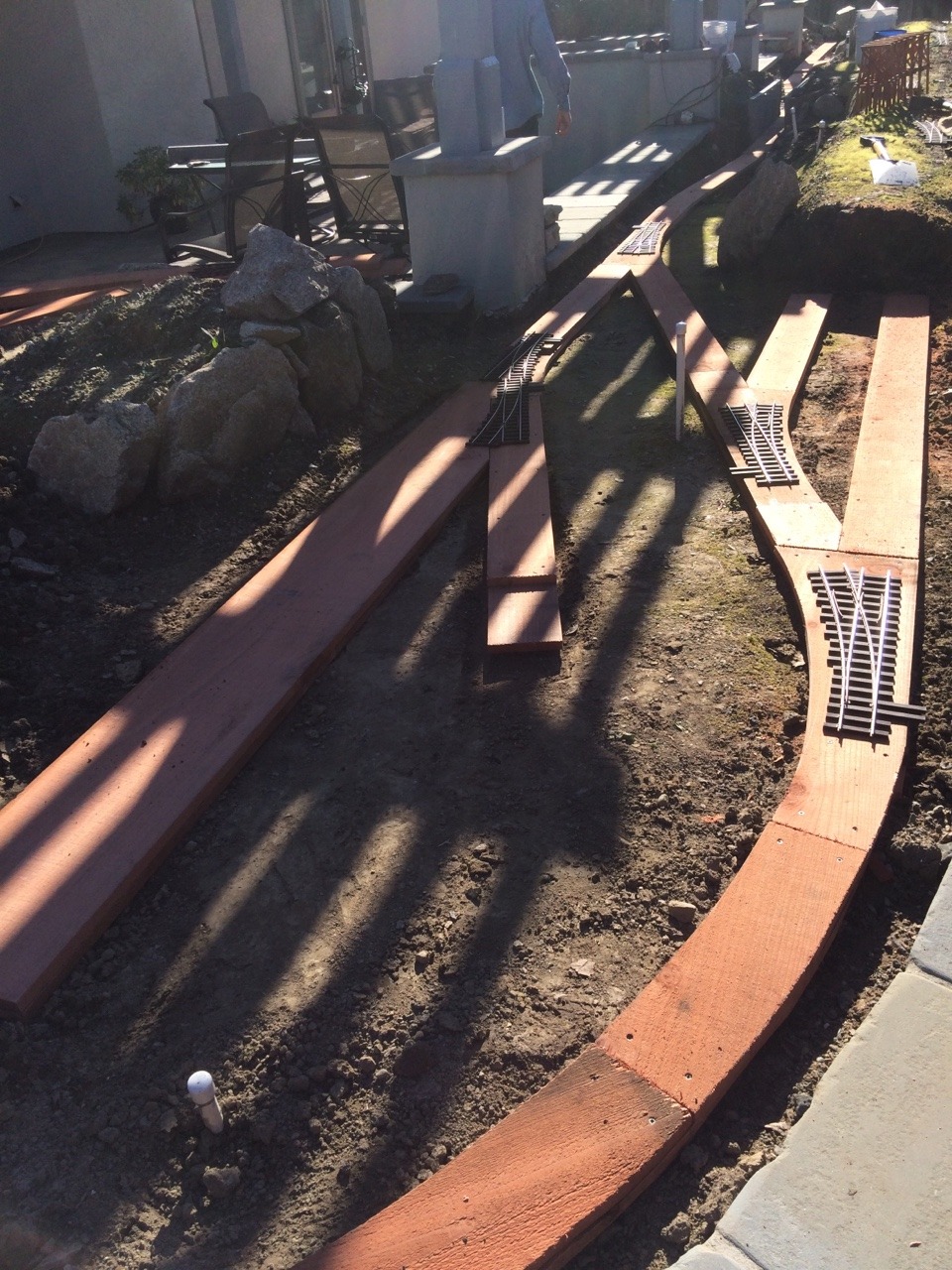
Cheers!


